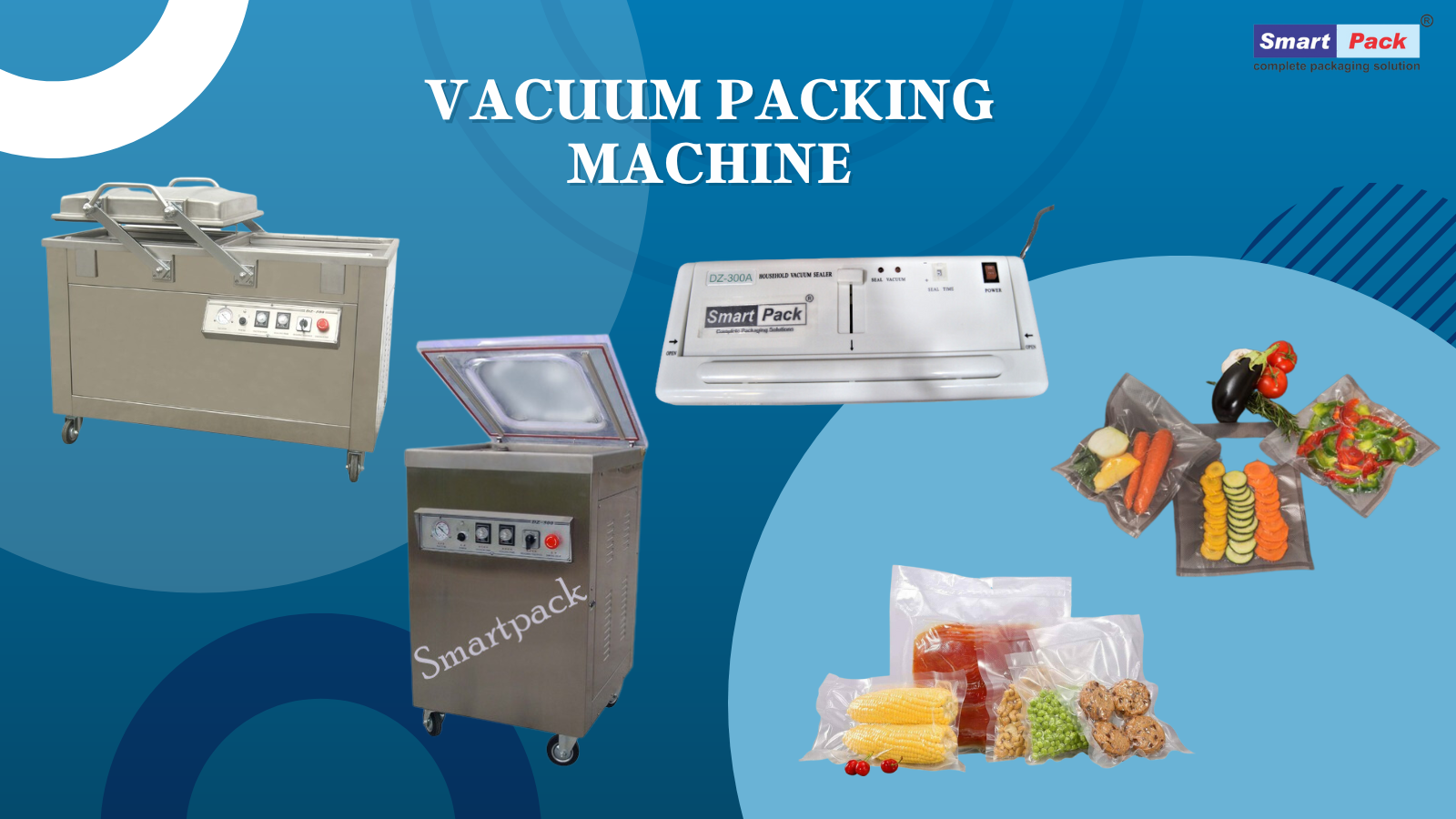Vacuum Packing Machine
A vacuum packaging apparatus refers to a device or system used for vacuum packaging. It typically consists of a machine or equipment that creates a vacuum environment inside a package or container and seals it to maintain the vacuum. The apparatus can include various components, such as a vacuum pump, sealing mechanism, controls, and sometimes additional features like gas flushing capabilities.
The primary purpose of a vacuum packaging apparatus is to remove air or oxygen from the package, reducing the oxygen level and creating a low-pressure environment. This process helps to inhibit the growth of spoilage-causing microorganisms, slow down the degradation of perishable products, and extend their shelf life.
Vacuum packaging apparatus is widely used in the food industry for packaging various food products, including meat, fish, fruits, vegetables, cheese, and baked goods. It can also be utilized in other industries for packaging non-food items such as electronics, pharmaceuticals, industrial components, and more, where the preservation or protection of the product is essential.
Types of Vacuum Packing Machines
Vacuum packing machines are used to remove air from a package or container and seal it, creating a vacuum-sealed environment that helps preserve the freshness and extend the shelf life of various products. There are several types of vacuum packing machines available, each with its own features and applications. Here are some of the different types of vacuum packing machines:
- Chamber vacuum sealers are commonly used in commercial settings, such as restaurants, supermarkets, and food processing facilities. These machines have a chamber where the product and packaging are placed. The air is then extracted from the chamber, creating a vacuum, and the package is sealed. Chamber vacuum sealers can handle a wide range of products, including solid foods, liquids, powders, and delicate items.
- External vacuum sealers, also known as suction vacuum sealers, are typically used in homes, small businesses, and low-volume packaging operations. These machines have an external vacuum nozzle that is attached to the package to extract the air. Once the air is removed, the package is sealed. External vacuum sealers are generally less expensive and smaller in size compared to chamber vacuum sealers, making them suitable for occasional or light-duty use.
- Nozzle vacuum sealers are often used for industrial packaging applications. They feature a nozzle that is inserted into the package, and the air is drawn out through the nozzle. Once the air is evacuated, the package is sealed. Nozzle vacuum sealers are commonly used for packaging items like electronics, pharmaceuticals, and other products that require precise vacuum levels or modified atmosphere packaging.
- Thermoforming vacuum sealers are used for packaging large quantities of products. They are commonly found in food processing plants and industrial settings. Thermoforming machines heat a plastic film, shape it around the product, and then draw out the air to create a vacuum. The film is then sealed to enclose the product. Thermoforming vacuum sealers are ideal for packaging items like meat, cheese, and other perishable goods.
- Tray sealers are primarily used for packaging food products in trays or containers. Vacuum Packing Machines typically have a conveyor system that moves the trays along a sealing station. The air is evacuated from the tray, and a top film is applied and sealed, creating a vacuum-sealed package. Tray sealers are commonly used in food packaging operations for products like ready-to-eat meals, fruits, vegetables, and seafood.
These are some of the main types of vacuum packing machines available in the market. The choice of machine depends on the specific requirements, volume of packaging, and the nature of the products being packaged.
Price range of Vacuum sealing systems
The price range of vacuum sealing systems can vary depending on several factors, including the type of system, its features, brand, and capacity. Here is a general overview of the price range for different types of vacuum sealing systems:
- Chamber Vacuum Sealers: Chamber vacuum sealers are typically more expensive due to their higher capacity and advanced features. The price range for chamber vacuum sealers can vary from around $500 to several thousand dollars, depending on the size, capabilities, and brand.
- External Vacuum Sealers: External vacuum sealers are generally more affordable compared to chamber vacuum sealers. The price range for external vacuum sealers typically starts around $50 and can go up to a few hundred dollars, depending on the brand, features, and quality.
- Nozzle Vacuum Sealers: Nozzle vacuum sealers are often used in industrial settings and can be more costly due to their specialized functionality. The price range for nozzle vacuum sealers can range from a few hundred dollars to several thousand dollars, depending on the specifications and brand.
- Thermoforming Vacuum Sealers: Thermoforming vacuum sealers are industrial-grade machines designed for high-volume packaging. The price range for thermoforming vacuum sealers can be quite substantial, starting from several thousand dollars and going up to tens of thousands of dollars, depending on the size, complexity, and brand.
- Tray Sealers: Tray sealers can vary in price depending on their capacity and features. The price range for tray sealers typically starts around a few hundred dollars for smaller, more basic models, and can go up to several thousand dollars for larger, more advanced systems.

